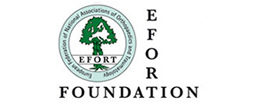Web users searching for information on orthopaedic procedures such as hip and knee replacements often come across dubious content, according to recent studies presented at the EFORT Congress in London. Only 14 percent of sites offering high-quality information are understandable for members of the general public. Experts recommended that users give preference to sites certified by the Health on the Net (HON) Foundation.
London, 6 June 2014 – Information on orthopaedic procedures such as joint replacements is widely available online, but most of it is of poor quality, provided for commercial reasons or hard for laypeople to understand. This is the key finding of two recent studies presented at the EFORT Congress in London.
The Congress is organised by the European Federation of National Associations of Orthopaedics and Traumatology (EFORT) together with the British Orthopaedic Association (BOA) and gathers more than 7,000 participants from around the globe. Patient safety is the main theme of this major medical meeting – which does not appear to be the main concern of website operators, since only a small minority of sites provide objective information, according to the author of one of the studies, Dr Robert William Walker of the Royal Cornwall Hospital in Truro, England.
Majority of sites put commercial interests first
Dr Walker and his team assessed the quality of websites offering information on knee and hip arthritis. Of the 83 websites that met the criteria for inclusion in the study, 53 percent were funded by commercial healthcare businesses, and surgeons and hospitals promoting certain types of intervention accounted for 70 percent of these providers. More than a third were for-profit sites financed by advertising revenue, including from pharmaceutical companies and prosthesis manufacturers. Little wonder, then, that much of the information was biased. Although a large majority of the sites (81 percent) featured information on surgical procedures, less than half (43 percent) mentioned possible complications that could result from an operation. Two-thirds of the sites did not refer to the sources of the information, while 57 percent supplied no details of the date on which the information was produced, which clearly is an obstacle to assessing its timeliness. Less than one-fifth of the sample (17 percent) was deemed by experts to be of high quality, 30 percent was rated as being of moderate quality and 54 percent was judged to be of low quality. “Poor or manipulative online information can pose a risk to the people who read it – after all, it plays a significant part in the decision about whether or when to have a joint replaced,” commented Dr Walker.
Poor readability
An Irish study which analysed 225 websites offering details on total hip and knee replacements and anterior cruciate ligament (ACL) reconstruction also failed to turn up much in the way of quality information. The evaluation concentrated on site quality and reliability. “The majority of the content was of poor quality. But the sites that met the quality criteria also provided information that was far too complex to be understood by members of the general public – a mere 14 percent were at the level of readability recommended for such content,” reported Dr Shane C. O’Neill of Dublin’s Tallaght Hospital. Only 27 percent of the sites analysed were accredited by HON.
Health On the Net is an internationally recognised NGO dedicated to promoting the spread of high-quality online health information for patients, medical professionals and the general public, and simplifying access to the latest and most relevant medical data on the internet. HON-certified sites must fulfil certain minimum standards, including in terms of ethics and transparency, and make a clear distinction between promotional and editorial contributions. “The HON-certified sites did better when it came to content, but not in relation to readability,” Dr O’Neill explained. In view of the lack of publicly available information on the web, he called on orthopaedic surgeons to provide patients and people looking for advice with easily understandable, high-quality explanations, or point them towards reliable sources of information. Internet users should also keep their eyes open for HON-certified websites.
About EFORT
The European Federation of National Associations of Orthopaedics and Traumatology (EFORT) is the umbrella organisation linking Europe´s national orthopaedic societies. EFORT was founded in 1991 in the Italian Marentino. Today it has 45 national member societies from 42 member countries and eleven associate scientific members.
EFORT is a non-profit organisation. The participating societies aim at promoting the exchange of scientific knowledge and experience in the prevention and treatment of diseases and injuries of the musculoskeletal system. EFORT organises an annual congress, seminars, courses, forums and conferences within Europe. It also initiates and supports basic and clinical research.
Sources: EFORT Abstract O’Neill et al, Elective Orthopaedic Information On The Internet; EFORT Abstract Walker et al, The Internet – An Issue For The Process Of Informed Consent; Health On the Net Foundation: www.hon.ch


